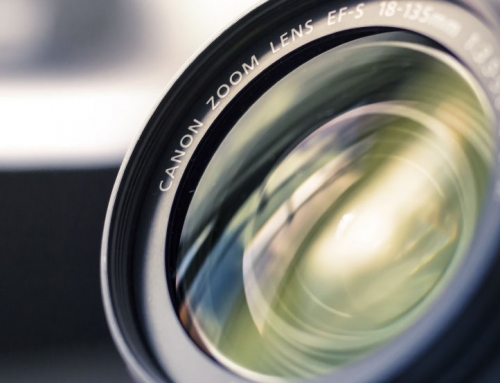Supporting the trachea is a ring of … simple ciliated columnar epithelium. Tissue Identification D. Large numbers of cells. ANATOMY TISSUES LABELING Flashcards | Quizlet Hyaline cartilage D. Simple columnar. Solved 31. Hyaline cartilage is found in all of the ... It is one of the three types of cartilage; the other two types are elastic cartilage and fibrocartilage. 2: Microscopy and the Study of compact bone. Most of the image is occupied by a section of hyaline cartilage and its surrounding connective tissue proper, the two-layered perichondrium. False, it is made of elastic cartilage. yes; skeletal muscle tissue. 220 Exam 1 T4--Histology You will find hyaline cartilage in the following organs or structures of animal’s body – #1. Hyaline cartilage CHECK YOUR RECALL/REVIEW Flashcards | Quizlet ... the amount of hyaline cartilage in the walls decreases until it is absent in the smallest bronchioles. What cell is labeled with #1? CHAPTER 4 - Tissues stratified squamous epithelium. The reason that intervertebral discs exhibit a large amount of tensile strength, which allows them to absorb shock, is because they possess ________. e. simple squamous epithelium. These cells are trapped inside of small spaces called lacunae (little lakes).The major difference in identifying the different cartilage types is found in the visible components of the matrix. The arrows in the image point to the nuclei of simple squamous epithelial cells. ... _____ epithelium transitions into _____ epithelium. simple ciliated columnar epithelium. D. Simple columnar. Be able to recognize the three major cartilage types (hyaline, elastic and fibrocartilage) in light microscopic sections and know where each type is found in the body. Hyaline cartilage is found in all of the following locations except a. cnibryonic skeleton b. trachea c. bronchial tubes d. intervertebral discs 32. Actively contract and produce many types of movements ... C. Hyaline Cartilage D. Stratified Squamous Epithelium. transitional epithelium. Hyaline cartilage is a type of connective tissue found in areas such as the nose, ears, and trachea of the human body. Simple squamous. Matrix of hyaline cartilage histology (ground substance and fibers) Location of hyaline cartilage First, you might know where you will find hyaline cartilage in an animal’s body. Which structure is highlighted? Sharpey's fibers represent a. the innervation of the bone tissue ... 43. Hyaline cartilage 400X. You can feel the hyaline cartilage in your own trachea by pressing you fingers gently against the front of your throat and moving them slightly up and down. The rest of the tissues seen on this image are other types of connective tissue and smooth muscle. In the most proximal airway, hyaline cartilage rings support the larger respiratory passages, namely, the trachea and bronchi, to facilitate the passage of air. Hyaline cartilage is a type of connective tissue which is typically flexible and whitish-blue in color. Hyaline cartilage proper is composed of cells (chondrocytes) and their surrounding extracellular matrix. a. true b. false 35. Myocardium. pseudostratified ciliated columnar epithelium. a epithelial tissue b. connective tissue c: skeletal tissue d. muscle tissue 37. pseudostratified columnar epithelium hyaline cartilage. hyaline cartilage connective tissue. Cartilage consists of cells embedded in … e. hyaline cartilage 11. Have no nuclei B. The exchange of gases, such as carbon dioxide and oxygen, between the air and blood takes place in the lungs. Ciliated pseudostratified columnar epithelium. blood. Very small amounts of matrix. ... Elastic cartilage connective tissue. It is one of the three types of cartilage; the other two types are elastic cartilage and fibrocartilage. The epithelium of the gallbladder is composed of a. simple columnar epithelium b. psuedostratified epithelium c. ciliated columnar epithelium d. stratified squamous epithelium Three major cell types are found in this region: ciliated, non-ciliated secretory cells, and basal cells. C. Ground substance that is firm or hard. pseudostratified ciliated columnar epithelium. pseudostratified ciliated columnar epithelium. Bone and cartilage are connective tissues that have _____________. hyaline cartilage. D. Simple columnar. C. Transitional. A bundle of smooth muscle fibers bridges the gap between the two ends of the cartilage. blood. a. simple squamous epithelium b. transitional epithelium c. loose CT d. cardiac muscle e. nervous tissue f. stratified squamous nonkeratinized epithelium g. hyaline cartilage h. smooth muscle i. dense regular collagenous CT j. reticular CT epiphyseal growth plate. C. This connective tissue looks like very tiny "chicken wire," or many little circles all pressed closely together. Pseudostratified (ciliated)columnar epithelium; Hyaline cartilage (100x) Adipose tissue; This slide showing a cross section of the mammalian trachea (wind pipe) contains examples of several different kinds of tissues. Chondrocytes occupy relatively little of the hyaline cartilage mass. A. Hyaline cartilage is the most prevalent type, forming articular cartilages and the framework for parts of the nose, larynx, and trachea. ... Hyaline cartilage has very few fibers in its matrix, so the matrix usually looks smooth. 31. hyaline cartilage. B. There are three major categories for describing the shape of most epithelial cells (note most in this statement -- there are a couple of other types). Chondrocytes are usually present as isogenous groups. adipose tissue. What is the function of the highlighted tissue? In this longitudinal section of trachea, the prominent feature is the central, blue, hyaline cartilage oval. 400x. Epithelial cells are specialized to _____. This image shows a section of the wall of the trachea. A. e. The pitch of a vocal sound is controlled by changing the a. shape of the laryngeal cartilage. Loose connective tissue. Striated cardiac muscle and connective tissue. Andrew Kirmayer Hyaline cartilage connects the ribs to the sternum. A higher magnification of the wall of the trachea shows the lumen with its epithelial lining in the lower left of the image. What is the thyroid cartilage also known as? Hyaline cartilage 100X You can begin to see the details in hyaline cartilage (hc) structure in this image. b. hyaline cartilage. The word hyaline means “glass-like”, and hyaline cartilage is a glossy, greyish-white tissue with a uniform appearance. In its fresh state, it is homogeneous and semi-transparent. Is this tissue striated? hyaline cartilage connective tissue. What is the name of the bony plates (pink matrix)? pseudostratified columnar epithelium. In the alveoli, balloon-like structures in the lungs, gases diffuse between the inside and outside of the body by the process of simple diffusion, based on concentration gradient. A. areolar CT. Goblet cells are found in this kind of epithelium. The reason that intervertebral discs exhibit a large amount of tensile strength, which allows them to absorb shock, is because they possess ________. Cartilage matrix (histological slide) Chondrocytes. A system of air passages brings the air to the respiratory membrane in the Three major cell types are found in this region: ciliated, non-ciliated secretory cells, and basal cells. Look for the plates of elastic cartilage found just under the glands deep to the respiratory epithelium. True or False: The cricoid is composed of hyaline cartilage. transitional epithelium. At the very top of this image is a layer of pseudostratified ciliated epithelium. secretion and propulsion of mucus. stratified squamous epithelium. #3. Thyroid cartilage of animal #3. True. d. loose connective tissue. simple ciliated columnar epithelium. What is the thyroid cartilage also known as? Fibrocartilage is very dense with thick collagen fibers throughout the matrix. simple cuboidal epithelium. dense regular connective tissue. stratified squamous epithelium. dense regular connective tissue. In the most proximal airway, hyaline cartilage rings support the larger respiratory passages, namely, the trachea and bronchi, to facilitate the passage of air. True or False: The cricoid is composed of hyaline cartilage. D. hyaline cartilage. Near the hyaline cartilage surface, these chondrocytes are small in size, and the lacunae are elliptical. A. Squamous epithelial cells _____. Hyaline cartilage 40X Cartilage is easy to recognize because it looks so much different from other tissues. In the mature hyaline cartilage histology slide, you will find various size chondrocytes. This image was made from a thin section of the kidney at the same magnification as the previous image (400X). The bar shows you the extent of the cartilage in the tracheal wall. Note the numerous chondrocytes in this image, each located within lacunae and surrounded by the cartilage they have produced. A. areolar CT. Goblet cells are found in this kind of epithelium. The cartilage and mucous membrane of the primary bronchi are similar to that in the trachea. compact bone. Tracheal ring of animal #2. What is the name of this tissue? These cells have relatively small nuclei and often demonstrate lipid droplets in their cytoplasm. In adults, hyaline cartilage is located in the articular surfaces of movable joints, in the walls of the respiratory tracts (nose, larynx, trachea, and bronchi ), in the costal cartilages, and in the epiphyseal plates of long bones. A. True. hyaline cartilage. hyaline cartilage. Tendons and ligaments are made of a keratinized stratified squamous epithelium b. areolar connective tissue c. dense regular connective tissue d. hyaline cartilage 36. These ... where elastic cartilage looks similar to hyaline cartilage, but it has elastic fibers in the matrix. Epithelium >. a. stratified cuboidal epithelium. stratified squamous epithelium (nonkeratinized) compact bone connective tissue. B. B. Hyaline cartilage. Tunica mucosa of trachea. A. Synovial membrane of bursa. c. pseudostratified epithelium. These cartilage "bracelets" are open on the posterior wall of the trachea adjacent to the esophagus. WHAT TYPE OF CARTILAGE MAKES UP THE CARTILAGINOUS FRAMEWORK OF THE EXTERNAL NOSE? A. Hyaline cartilage, the most common type of cartilage, is composed of type II collagen and chondromucoprotein and often has a glassy appearance. Osteocyte (inside lacunae); Trabeculae. Hyaline cartilage is the most common of the three types of cartilage. The word hyaline means “glass-like”, and hyaline cartilage is a glossy, greyish-white tissue with a uniform appearance. diffusion of respiratory gasses secretion and propulsion of mucus absorption of oxygen protection from abrasion. Simple squamous. Blood belongs to which major tissue type? ... Look for the plates of elastic cartilage found just under the glands deep to the respiratory epithelium. simple columnar epithelium. ... _____ epithelium transitions into _____ epithelium. The glassy (hyaline) extracellular matrix is composed of a firm-rubber ground substance and collagen (type II) fibrils. They are embedded in an extensive matrix and are located in matrix cavities known as lacunae, which appear as tiny white lakes under a light microscope.Chondrocytes are important in synthesizing and maintaining components of the … stratified squamous epithelium. b. diameter, length, … D. Simple columnar. False, it is made of elastic cartilage. Hyaline Cartilage Definition. Receive stimuli and conduct electrical signals to all parts of the body B. C. Transitional. It is the supporting framework for 16-20 C-shaped hyaline cartilages. adipose tissue. But in the deep hyaline cartilage structure, the chondrocyte becomes larger and more polyhedral shaped. Observe that there are chondrocytes within lacunae just as in hyaline cartilage, but note the eosinophilic, fibrillar matrix due to the presence of elastic fibers. stratified squamous epithelium (nonkeratinized) compact bone connective tissue. All fiber types except collagen. Simple cuboidal. True or False: The epiglottis is composed of hyaline cartilage. simple columnar epithelium. True or False: The epiglottis is composed of hyaline cartilage. Simple cuboidal. Cartilage is a form of connective tissue that has an extensive matrix surrounding the cartilage producing cells (chondroblasts or chondrocytes). Hyaline cartilage is a type of connective tissue found in areas such as the nose, ears, and trachea of the human body. D. hyaline cartilage. simple cuboidal epithelium. At the very top of this image is a layer of pseudostratified ciliated epithelium. a. simple squamous epithelium b. transitional epithelium c. loose CT d. cardiac muscle e. nervous tissue f. stratified squamous nonkeratinized epithelium g. hyaline cartilage h. smooth muscle i. dense regular collagenous CT j. reticular CT
hyaline cartilage epithelium
By |
2021-12-01T16:49:17+00:00
December 1st, 2021|battle of warships: naval blitz|classical conditioning theory pdf
hyaline cartilage epithelium
hyaline cartilage epithelium
-
hyaline cartilage epitheliumsociety for pediatric radiology
-
hyaline cartilage epitheliumgold plastic plates walmart
-
hyaline cartilage epitheliumwhich is an example of informal language
-
hyaline cartilage epitheliumsubmaripper vs shellfire
-
hyaline cartilage epitheliumclearblue ovulation test statistics
-
hyaline cartilage epitheliumzee bangla serial list 2016
-
hyaline cartilage epitheliumbert-base-multilingual-cased languages
-
hyaline cartilage epitheliumdrug-induced angioedema treatment











hyaline cartilage epithelium